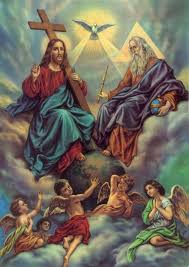Is there such a thing as Christian art?

Is there such a thing as Christian art? This question has been the subject of considerable debate among scholars, artists, and theologians for centuries. To address it, one must delve into the historical, cultural, and spiritual dimensions of art and its relationship with Christianity.
The Historical Context
Christian art can trace its origins to the early days of the faith, where it was used as a means of expressing and spreading the Christian message. The catacombs of Rome, with their frescoes of biblical scenes and symbols, offer some of the earliest examples of Christian art. These works served not only as decoration but also as visual theology, teaching and reinforcing the beliefs of the nascent Christian community.
During the medieval period, art became even more intertwined with Christianity. The grand cathedrals of Europe, with their intricate stained glass windows and soaring architecture, were designed to lift the soul towards the divine. The Renaissance brought a flourishing of religious art, with masters like Michelangelo, Leonardo da Vinci, and Raphael creating some of the most iconic Christian imagery. Their works, while steeped in the techniques and aesthetics of their time, were deeply imbued with Christian themes and spirituality.
The Cultural Dimension
Christian art is not monolithic; it varies widely across cultures and eras. What unites these diverse forms is their inspiration from Christian theology, scripture, and tradition. From the Byzantine icons with their distinctively stylised figures, to the emotive Baroque sculptures of Bernini, Christian art reflects the cultural contexts in which it was created.
In non-Western traditions, Christian art takes on different forms yet remains true to its spiritual roots. Ethiopian Christian art, for example, with its vibrant colours and unique iconography, offers a distinct perspective that enriches the broader tapestry of Christian artistic expression. Similarly, the art of Latin America, influenced by indigenous cultures and colonial history, provides a powerful testament to the adaptability and universality of Christian themes.
The Spiritual Aspect
At its core, Christian art is an expression of faith. It seeks to make visible the invisible, to capture the ineffable mystery of the divine. This spiritual dimension is what sets Christian art apart. It is not merely art that happens to depict Christian subjects; it is art that aims to convey a deeper spiritual truth.
Consider the works of the Pre-Raphaelites, who sought to revive the spiritual intensity and clarity of early Renaissance art. Their paintings often feature biblical and allegorical themes, rendered with a meticulous attention to detail and a deep sense of reverence. Or take the abstract works of modern artists like Mark Rothko, whose colour fields, though not overtly religious, can evoke a profound spiritual experience, suggesting a yearning for the transcendent.
Contemporary Christian Art
In contemporary times, Christian art continues to evolve, reflecting the changing landscapes of both the church and the world. Artists like Makoto Fujimura blend traditional techniques with modern sensibilities, creating works that are both deeply personal and universally resonant. His “The Four Holy Gospels,” for instance, merges abstract expressionism with biblical themes, offering a fresh and thought-provoking perspective on sacred texts.
Moreover, contemporary Christian art often grapples with social and political issues, seeking to bring a prophetic voice to the world’s injustices. The works of artists like Chidi Kwubiri and Emmanuel Garibay challenge viewers to consider the implications of their faith in the context













